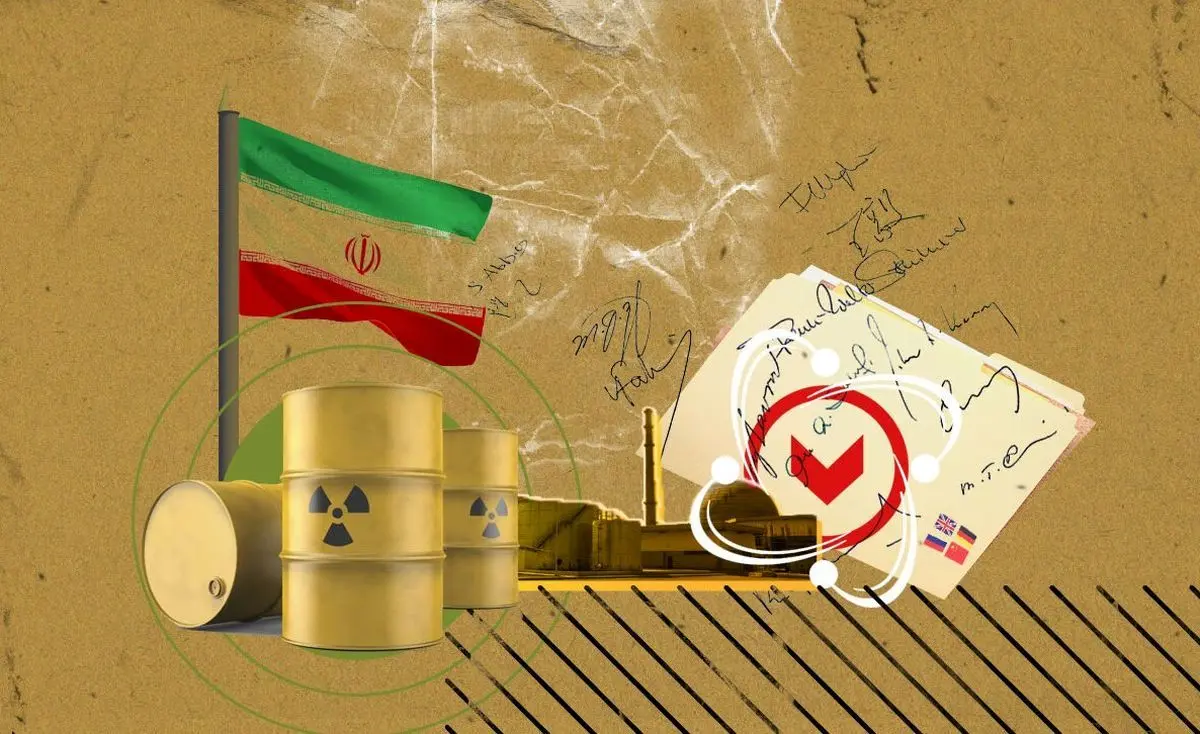SAEDNEWS: The snapback mechanism (Snapback) is a process under which, in the event of a major alleged violation by Iran of its JCPOA commitments, the lifted UN Security Council sanctions against Iran are reimposed.

According to Saed News, The term "snapback" comes from the idea that, like pulling the trigger of a gun, only one decision in the Security Council can lead to the sudden return of sanctions.
According to Daneshjoo news, the snapback mechanism is a term that gained prominence after Iran’s nuclear agreement with world powers, known as the Joint Comprehensive Plan of Action (JCPOA).
This mechanism was one of the most significant legal and political features of the agreement, officially enshrined in UN Security Council Resolution 2231.
The snapback mechanism refers to a procedure whereby, in the event of a JCPOA violation or major disputes over the implementation of commitments by any party, the lifted sanctions can be rapidly reinstated without the need for a new Security Council vote.
What is the JCPOA?
The Joint Comprehensive Plan of Action (JCPOA), commonly referred to in Iran as "Barjam," is an agreement between Iran and the P5+1 group (the United States, the United Kingdom, France, Russia, China, and Germany).
The agreement was signed on July 14, 2015, and later that year was endorsed by the UN Security Council through Resolution 2231. The main objective of the JCPOA was to prevent Iran from acquiring nuclear weapons in exchange for the lifting of international sanctions and enabling economic cooperation.
The Legal Basis of the Snapback Mechanism
This mechanism is founded on the text of UN Security Council Resolution 2231.
According to this resolution, it is not necessary for all Security Council members to vote in favor of reinstating sanctions; it is sufficient for just one permanent member of the Council to claim Iran’s "significant non-compliance."
Once such a claim is submitted, the snapback mechanism is triggered, and after a set period (usually 30 days), sanctions are automatically reinstated unless the Security Council adopts a new resolution rejecting the claim.
However, permanent members (the five countries with veto power) can veto any new resolution, thereby blocking its adoption.
Difference from Unilateral Sanctions
Sanctions imposed by the United States or the European Union against Iran can be applied independently and outside the UN framework. But the snapback mechanism concerns only UN sanctions, which carry international legitimacy. These sanctions, prior to the JCPOA, had the greatest impact in isolating Iran economically and politically.
Dispute Resolution Mechanism in the JCPOA
The JCPOA included a mechanism known as the "Joint Commission" to resolve potential disputes among parties over the implementation of commitments. The members of this commission include all JCPOA signatories.
In the event of a dispute or complaint by any party alleging a violation of commitments, the complaint is first addressed through the Joint Commission and then may be referred to higher levels (including foreign ministers or even arbitration).
If no solution is reached, the complaining party can ultimately refer the matter to the UN Security Council.
UN Security Council Resolution 2231
Resolution 2231 is in fact the formal adoption of the JCPOA in the Security Council and the replacement of a set of international sanctions with the defined monitoring mechanisms in the JCPOA. This resolution contains legal details regarding the lifting or suspension of sanctions and the mechanism for the automatic re-imposition of sanctions, also known as the snapback mechanism.
According to this resolution, any permanent or non-permanent member of the Security Council can, by declaring Iran’s “significant non-performance” of its obligations, initiate a process that could ultimately lead to the rapid return of all previous sanctions.
How to Activate the Snapback Mechanism
This section refers to the most important issue regarding the snapback mechanism, namely how it is activated.
Main Stages of Activating the Snapback Mechanism
Activating the snapback mechanism involves several steps, summarized as follows:
Filing a Complaint in the JCPOA Joint Commission
If one of the JCPOA members believes that Iran (or another party) has violated its commitments, a complaint is filed in the Joint Commission.
Dispute Resolution at Higher Levels
If no agreement is reached in the Commission, the issue is referred to the foreign ministers of the JCPOA parties, and then to a dispute resolution or arbitration board.
Referral to the Security Council
If the dispute remains unresolved, the complainant may refer the matter to the United Nations Security Council.
Countdown Begins
After the issue is formally referred to the Security Council, within a 30-day period, if a new resolution to extend the suspension of sanctions is not adopted (or is blocked by a veto from permanent members), the previous sanctions automatically return.
The Role of the Security Council in Activating the Snapback Mechanism
Based on Resolution 2231, the Security Council is obliged to address the claim of non-compliance, but in practice the veto power of the five permanent members allows any one of them to prevent the adoption of a new resolution to block the return of sanctions.
Thus, if for example the United States or another permanent member triggers the snapback mechanism, it can, by vetoing any opposing resolution, effectively reactivate Security Council sanctions against Iran.
Main Strength and Weakness
Strength: For the main complainant (e.g., the U.S.), it is possible to restore sanctions without needing the approval of other Security Council members. An international consensus is not required, and the declaration of just one country is sufficient.
Weakness: This mechanism, if politically misused, can undermine an international agreement and call into question the credibility of multilateral diplomacy. Other countries, including JCPOA partners, may also unilaterally declare that they do not consider the action legal or legitimate.
Legal and Political Obstacles and Challenges of Using the Snapback Mechanism
Certainly, like other issues in international law, there are obstacles and challenges facing the snapback mechanism, which I will fully examine in this section.
Legal and Political Obstacles and Challenges of Using the Snapback Mechanism / Disagreement Over the Legitimacy of Activation
One of the key disagreements is whether countries that have withdrawn from the JCPOA still have the right to use the snapback mechanism.
For example, after the official U.S. withdrawal from the JCPOA in 2018, Washington argued that as one of the original participants in Resolution 2231, it still retained the right to activate the snapback mechanism. But Iran and other JCPOA members opposed this claim, arguing that by leaving the JCPOA, the U.S. had lost its legal standing to use this mechanism.
Complexity of International Law
The snapback mechanism, given the text of Resolution 2231 and the JCPOA, is highly unique in international law. This mechanism largely bypassed the consensus-based international legal structure and created a shortcut for the re-imposition of sanctions.
Therefore, there are various interpretations regarding its implementation. In practice, more than the legal interpretation, the political will of the powers is decisive.
Resistance of Other Global Powers
Even if a permanent member of the Security Council (e.g., the U.S.) activates the snapback mechanism, other Council members or countries may refuse to enforce these sanctions in practice.
The refusal of the European Union, Russia, or China to accompany the U.S. in secondary sanctions is an example of such resistance.
However, due to the structure of the international financial system and the influence of the U.S. in the global banking sector, many countries may be forced to comply with the sanctions.
Impact on the Future of the JCPOA
The snapback mechanism in itself is considered a leverage card for political pressure on Iran or for maintaining discipline in the implementation of the JCPOA. But unilateral implementation without consensus can completely discredit the JCPOA and even lead to the death of the agreement.
In such circumstances, Iran may also abandon all its commitments and advance its nuclear program without limitations.

